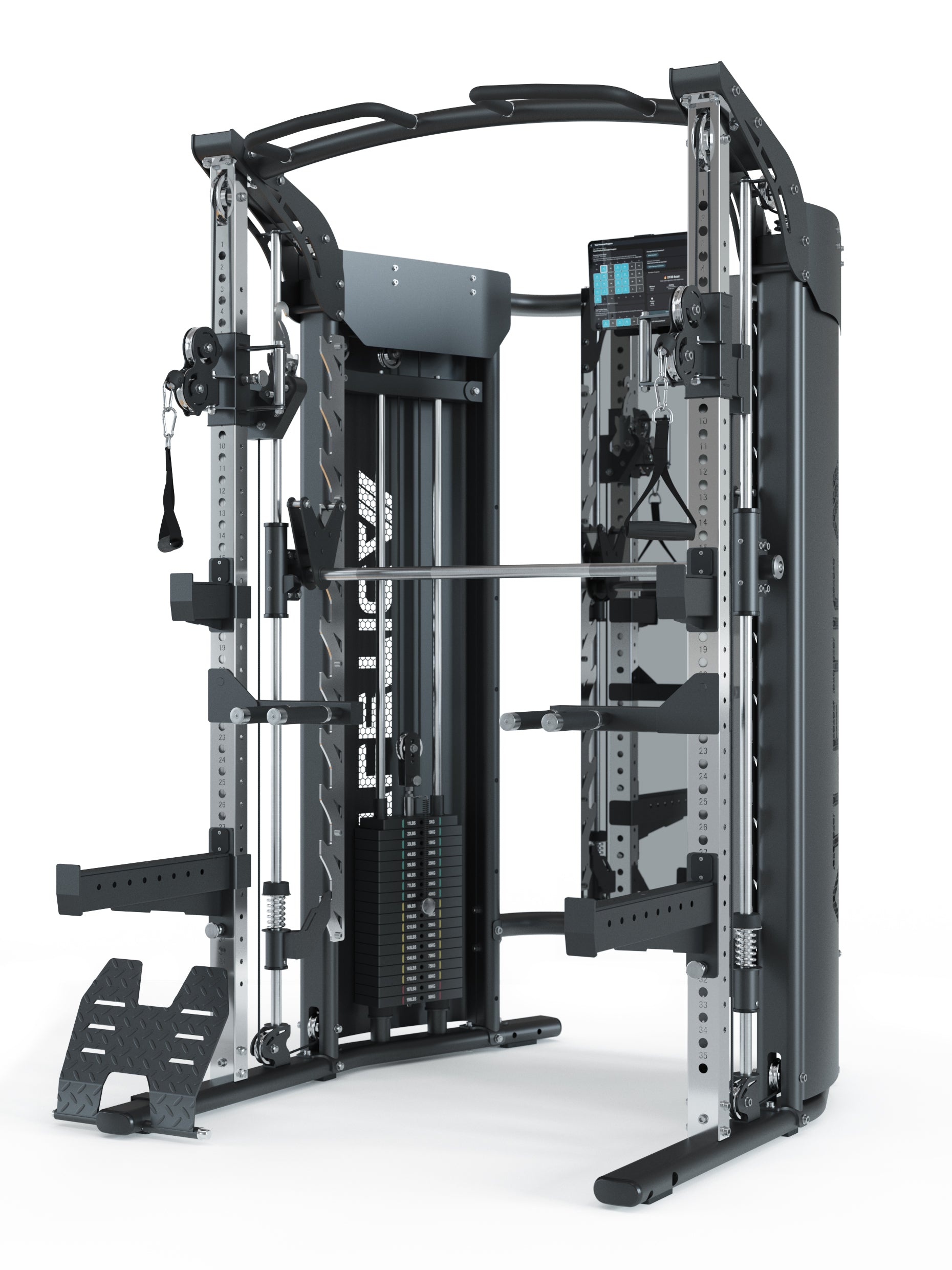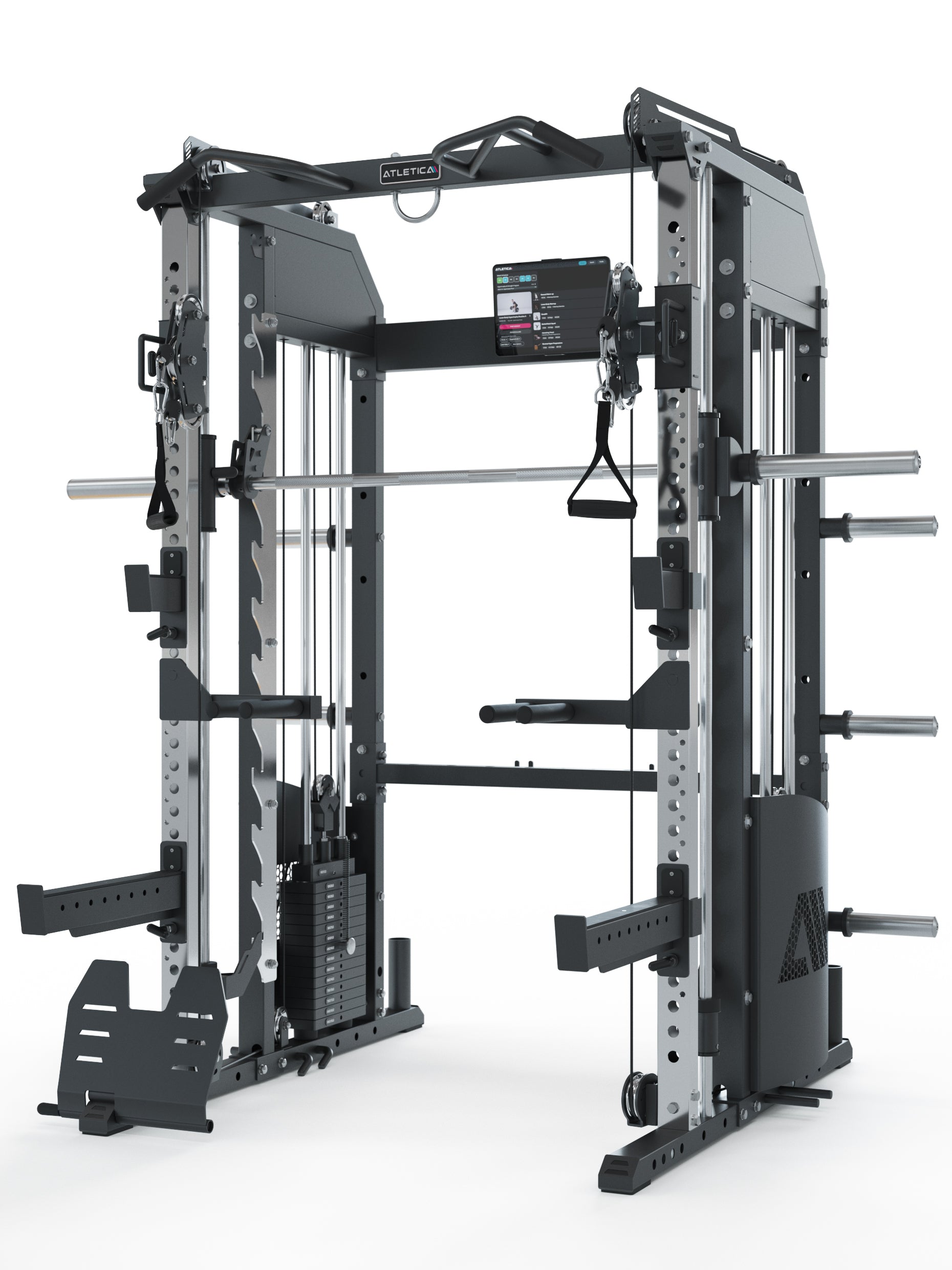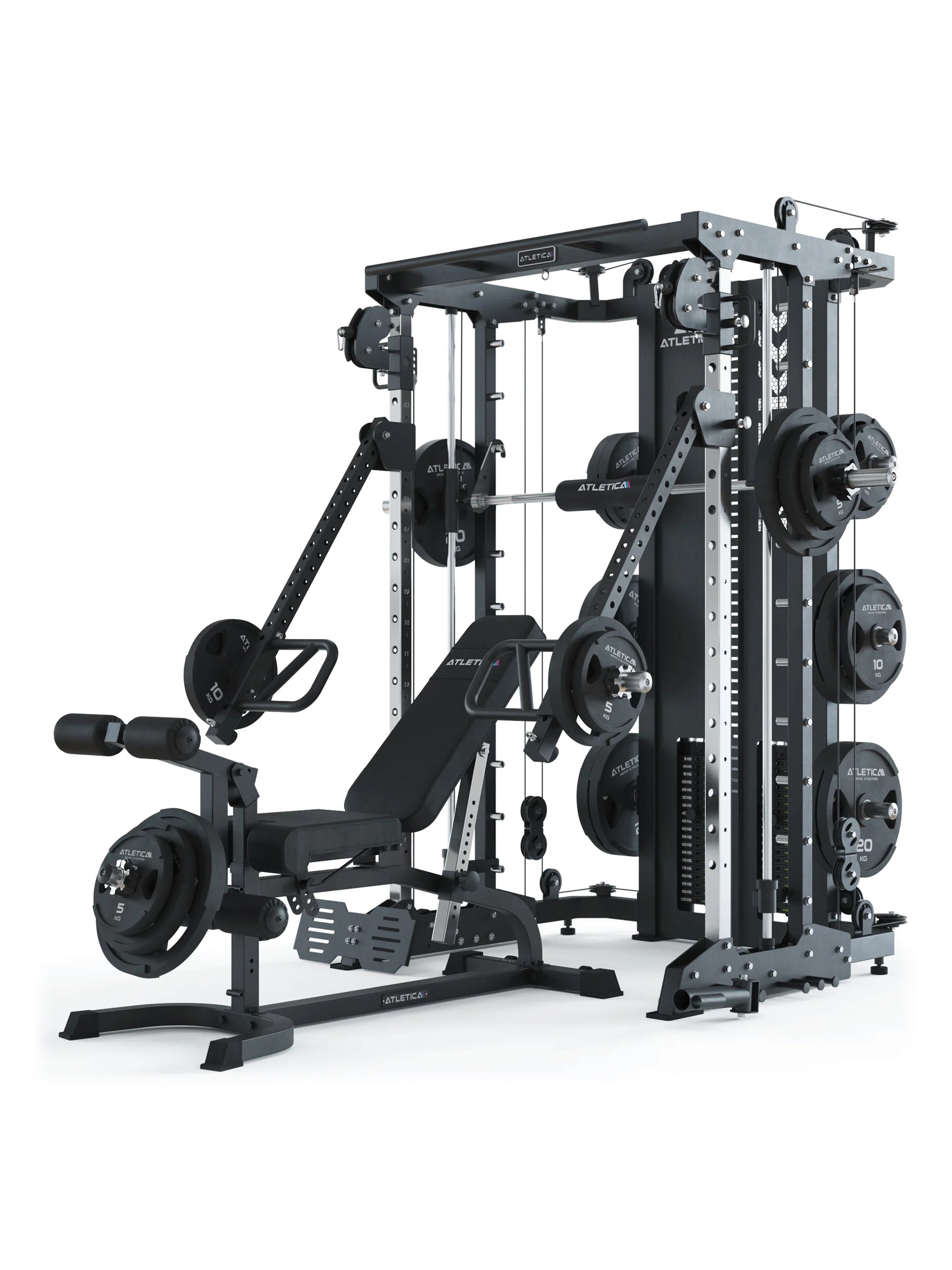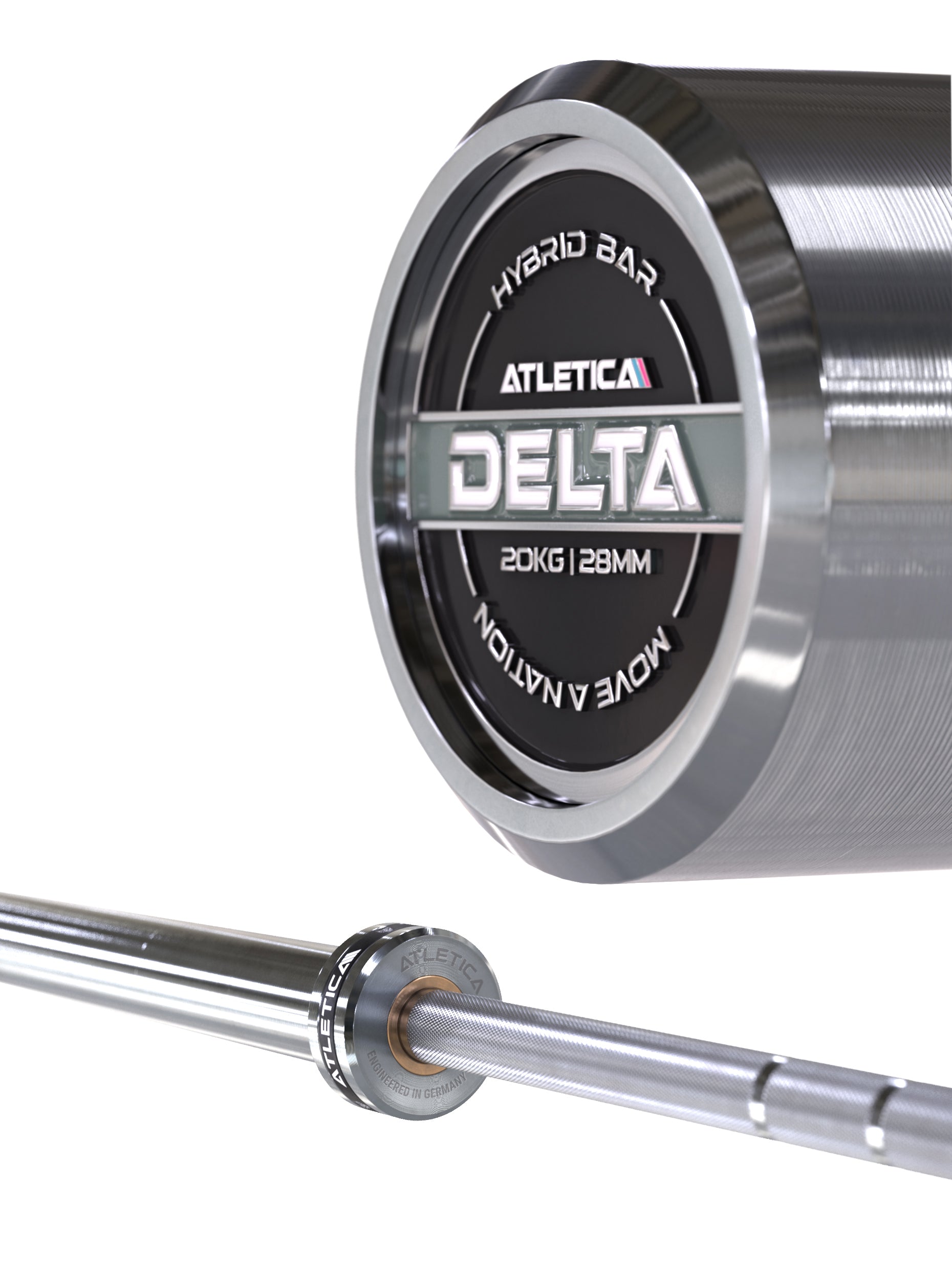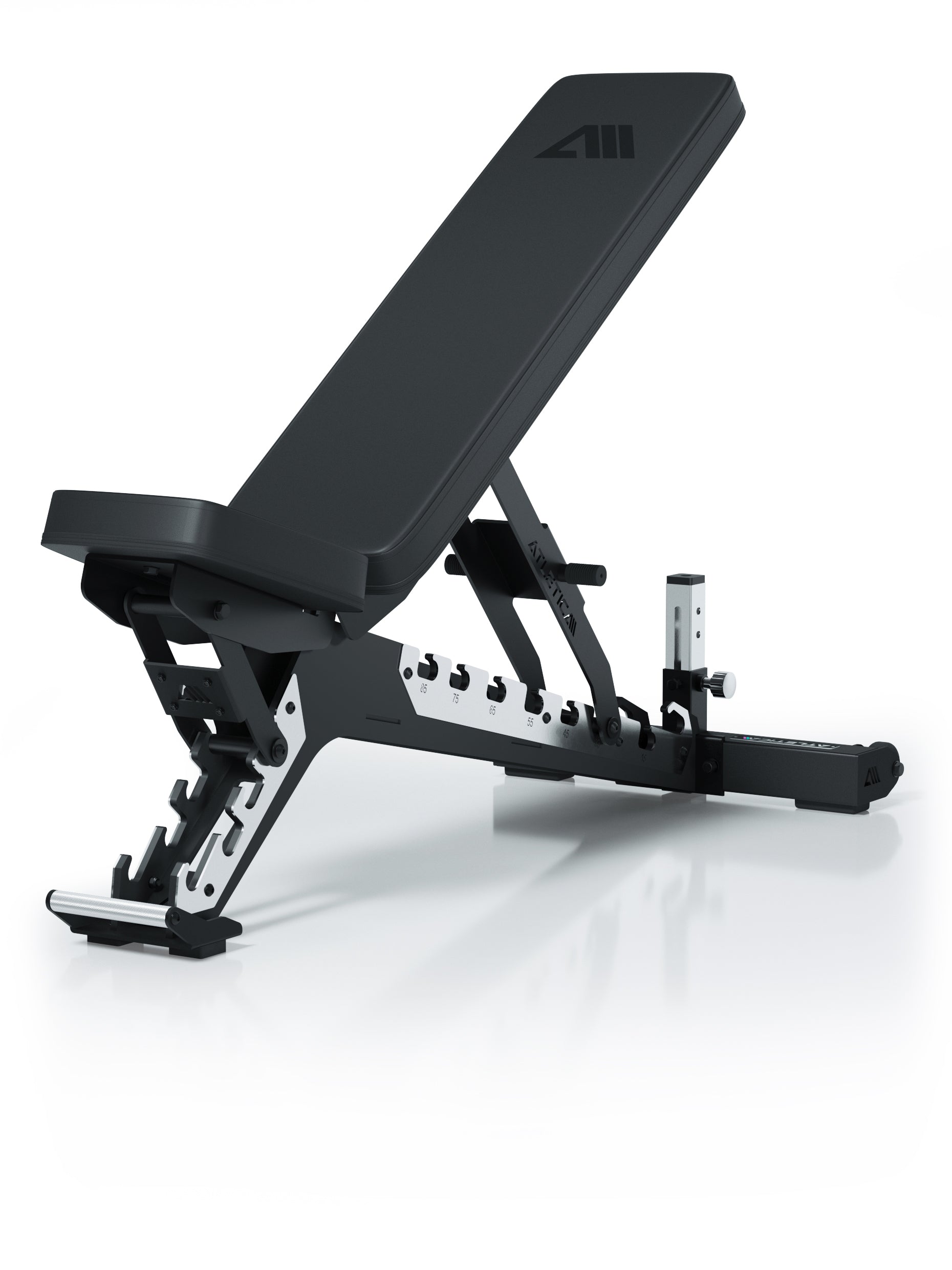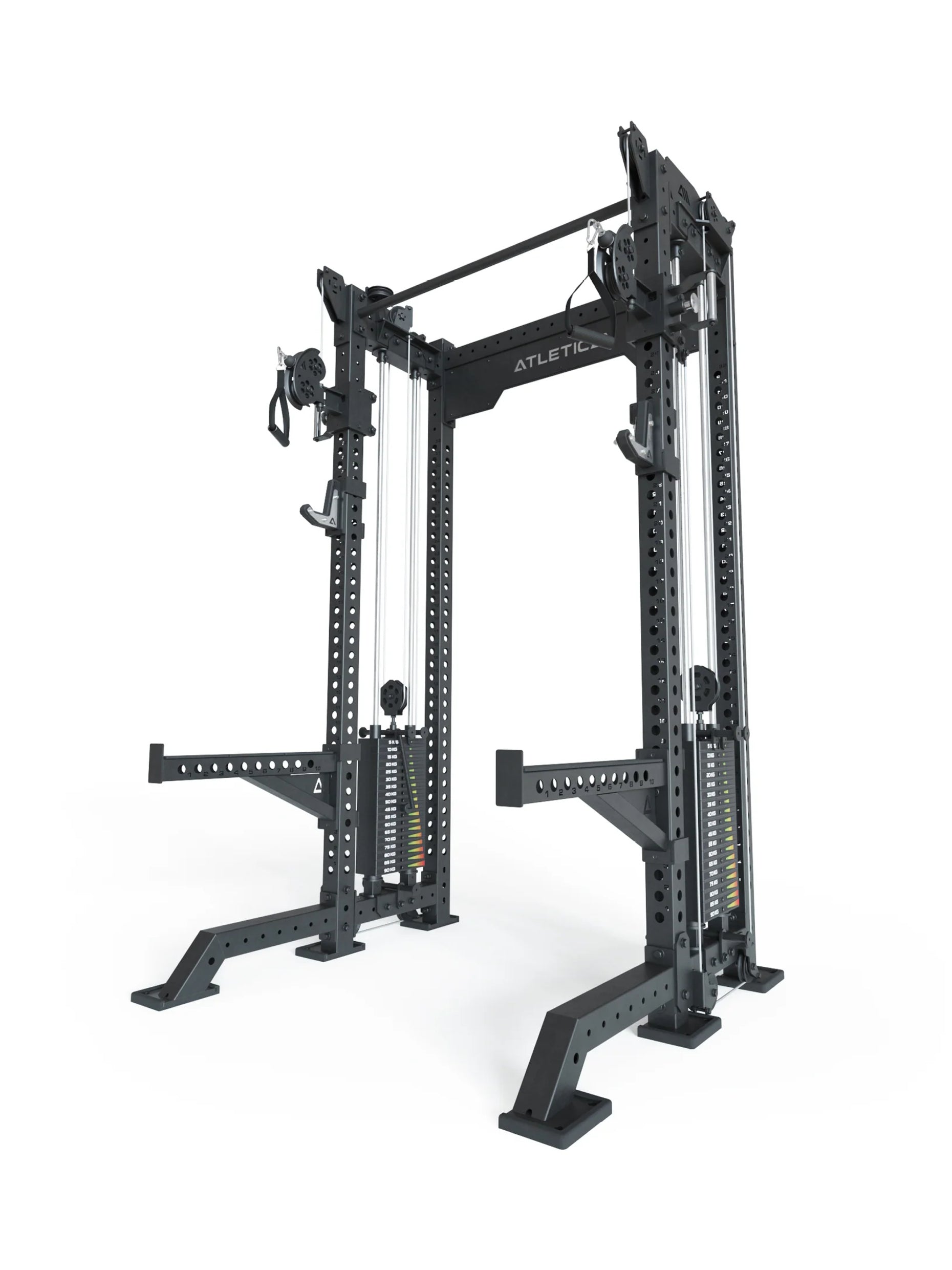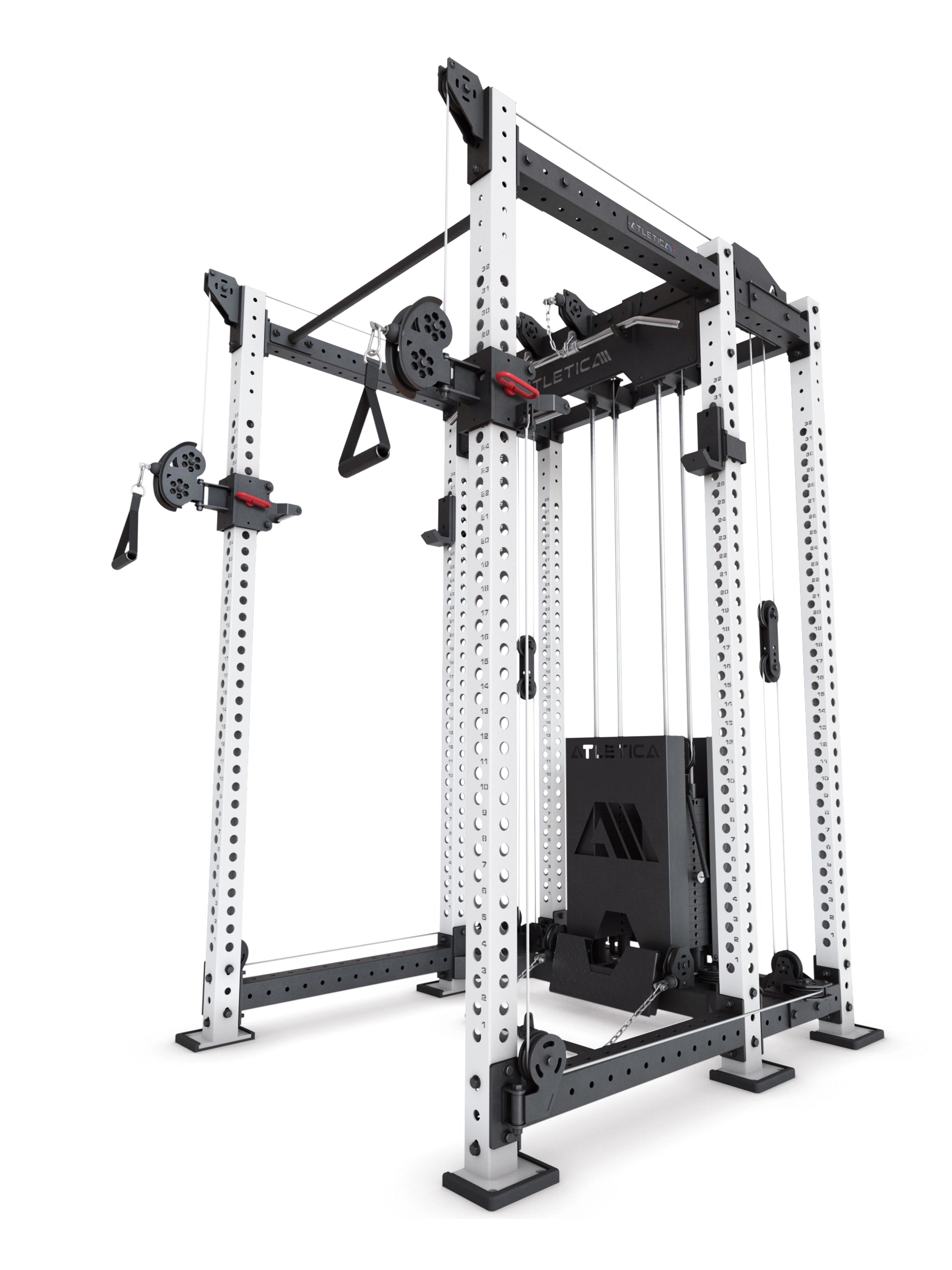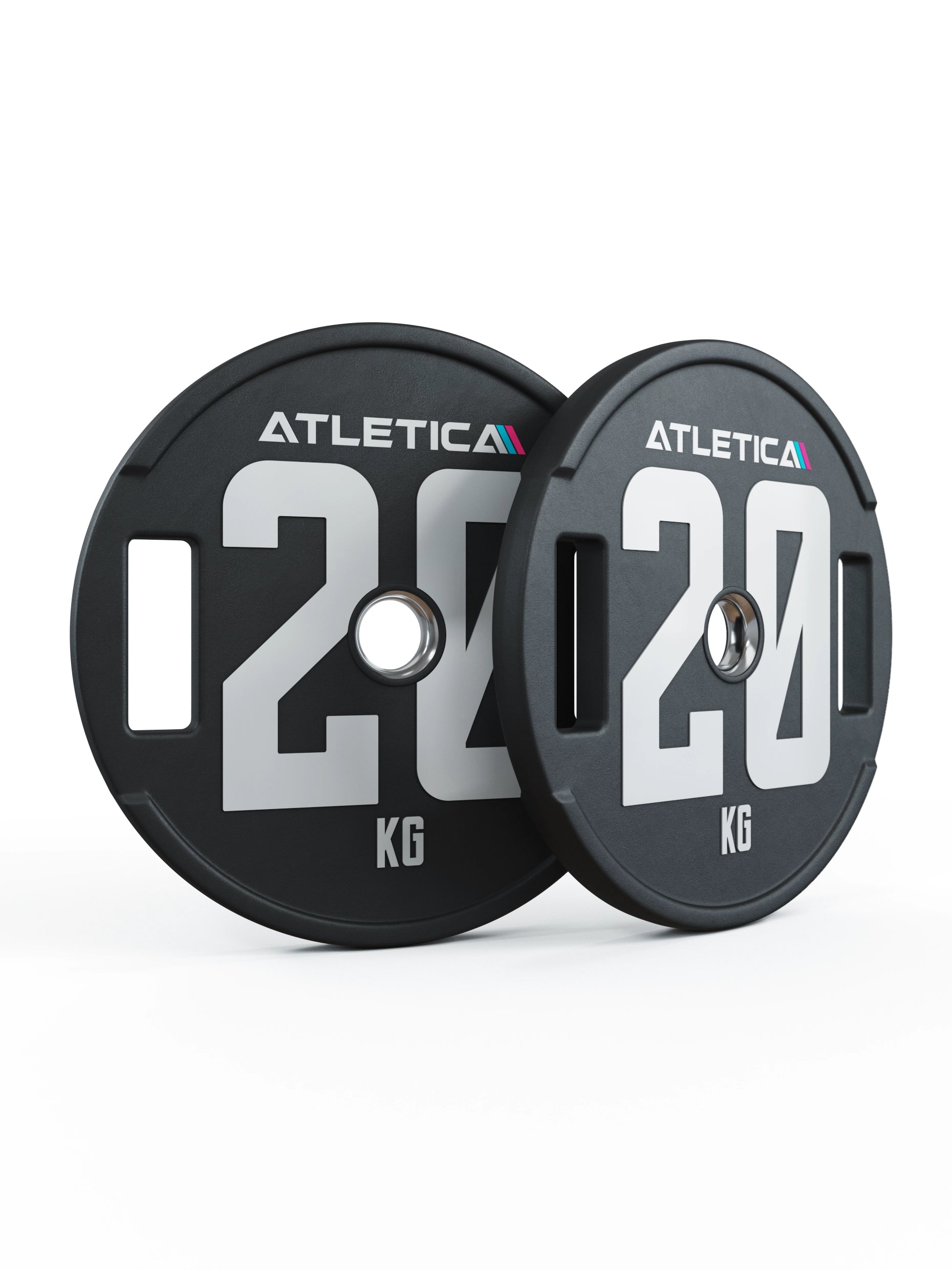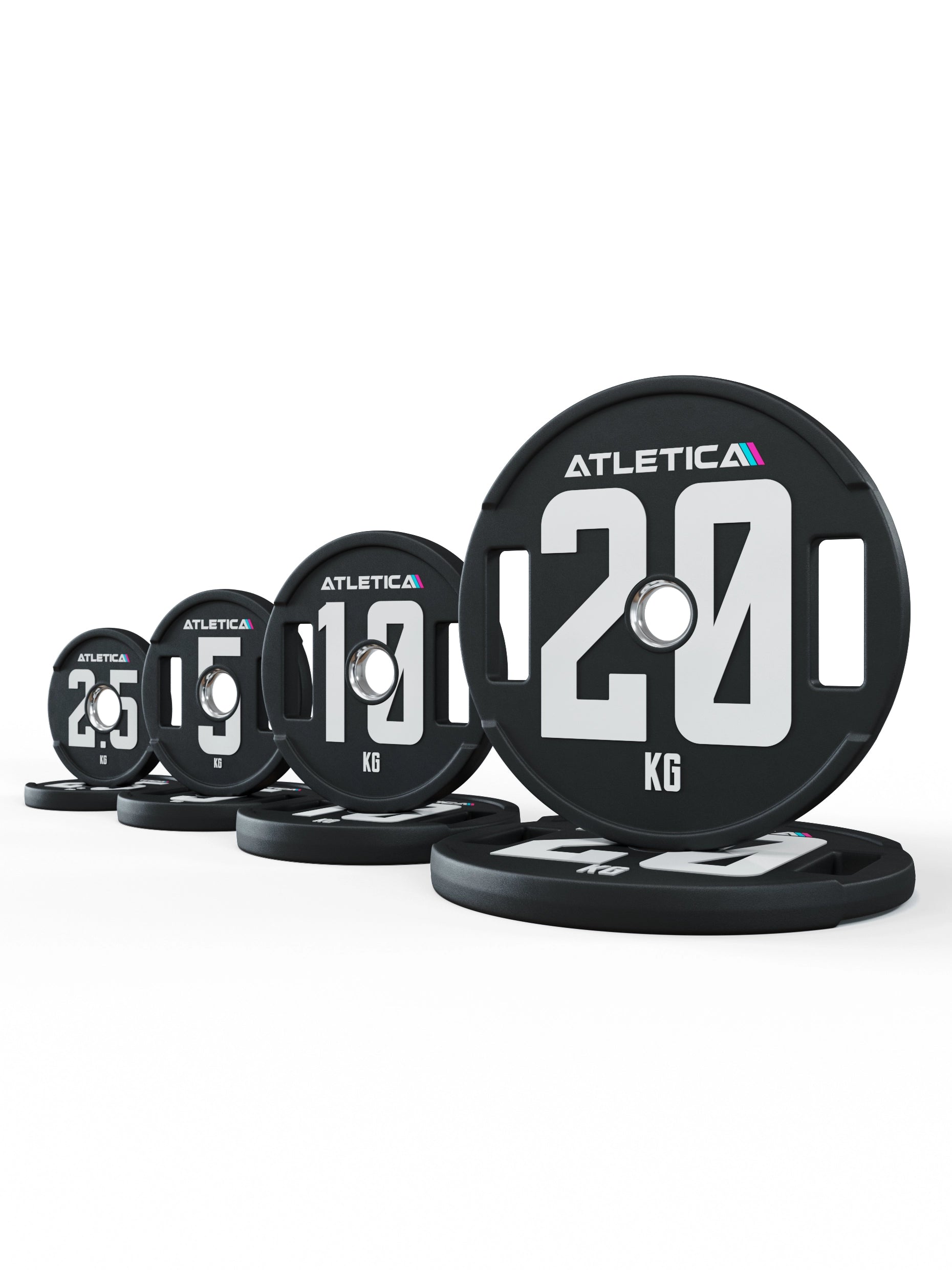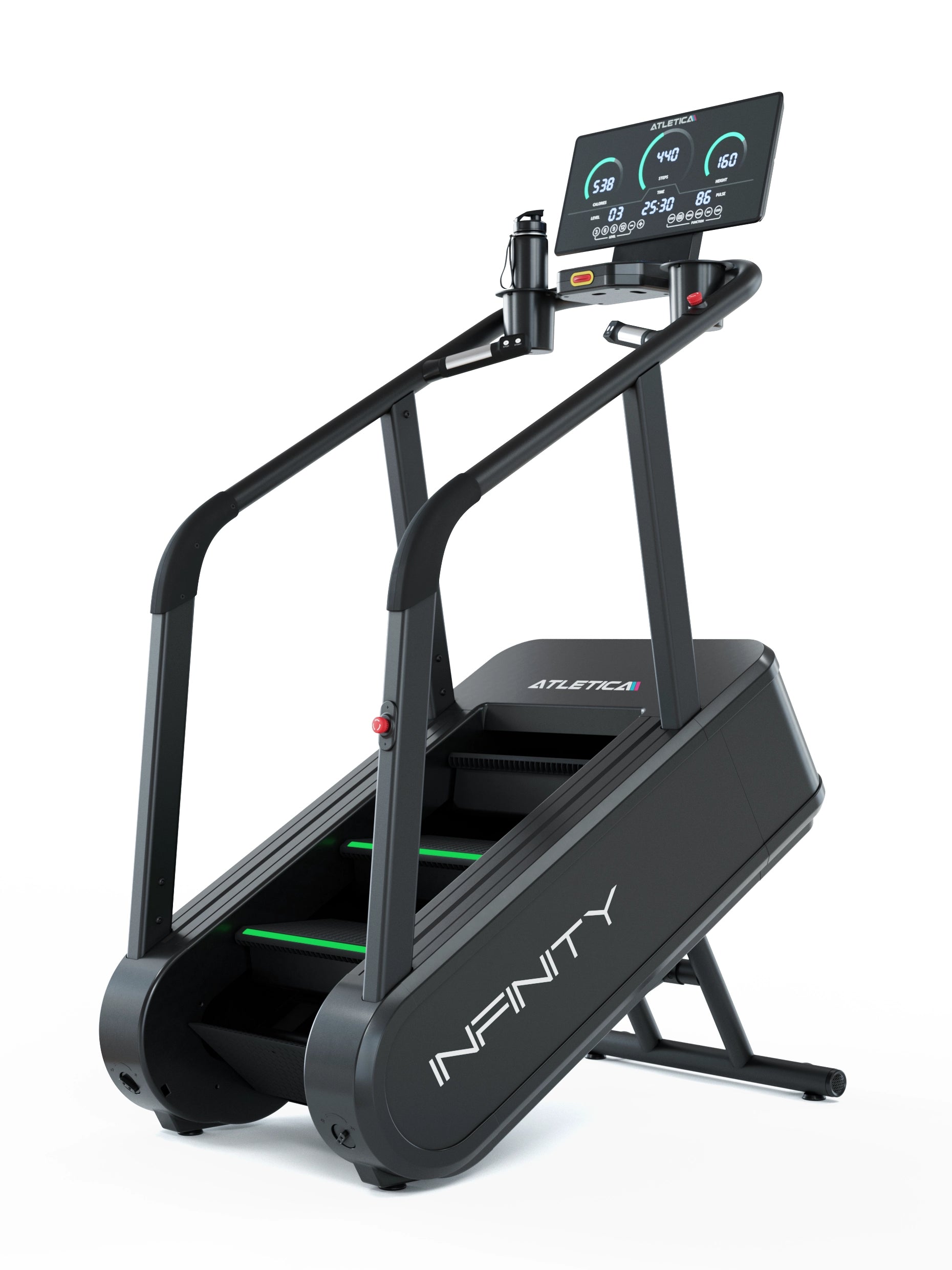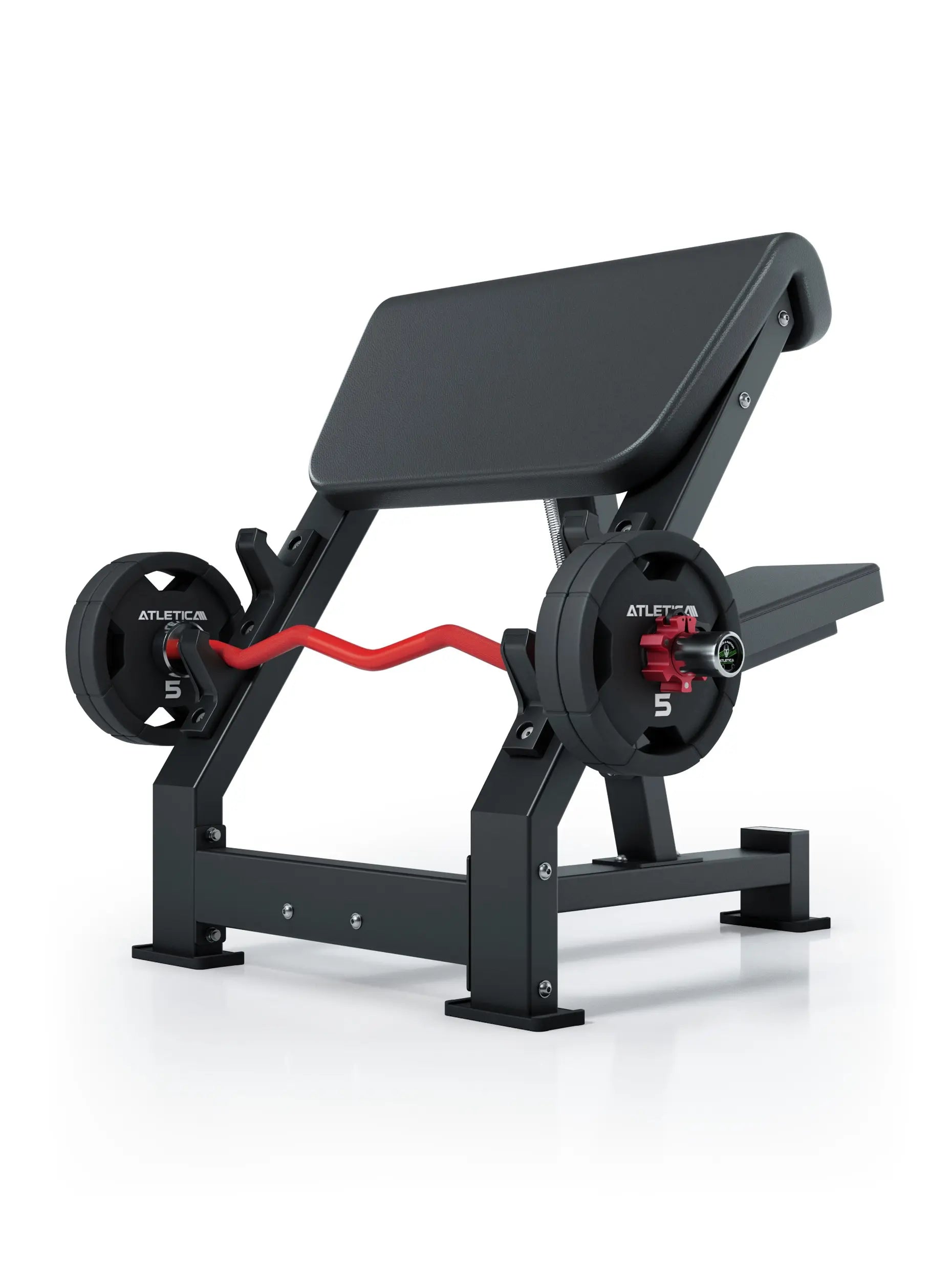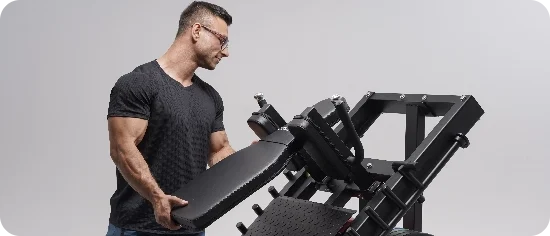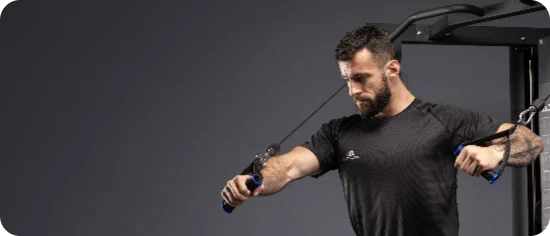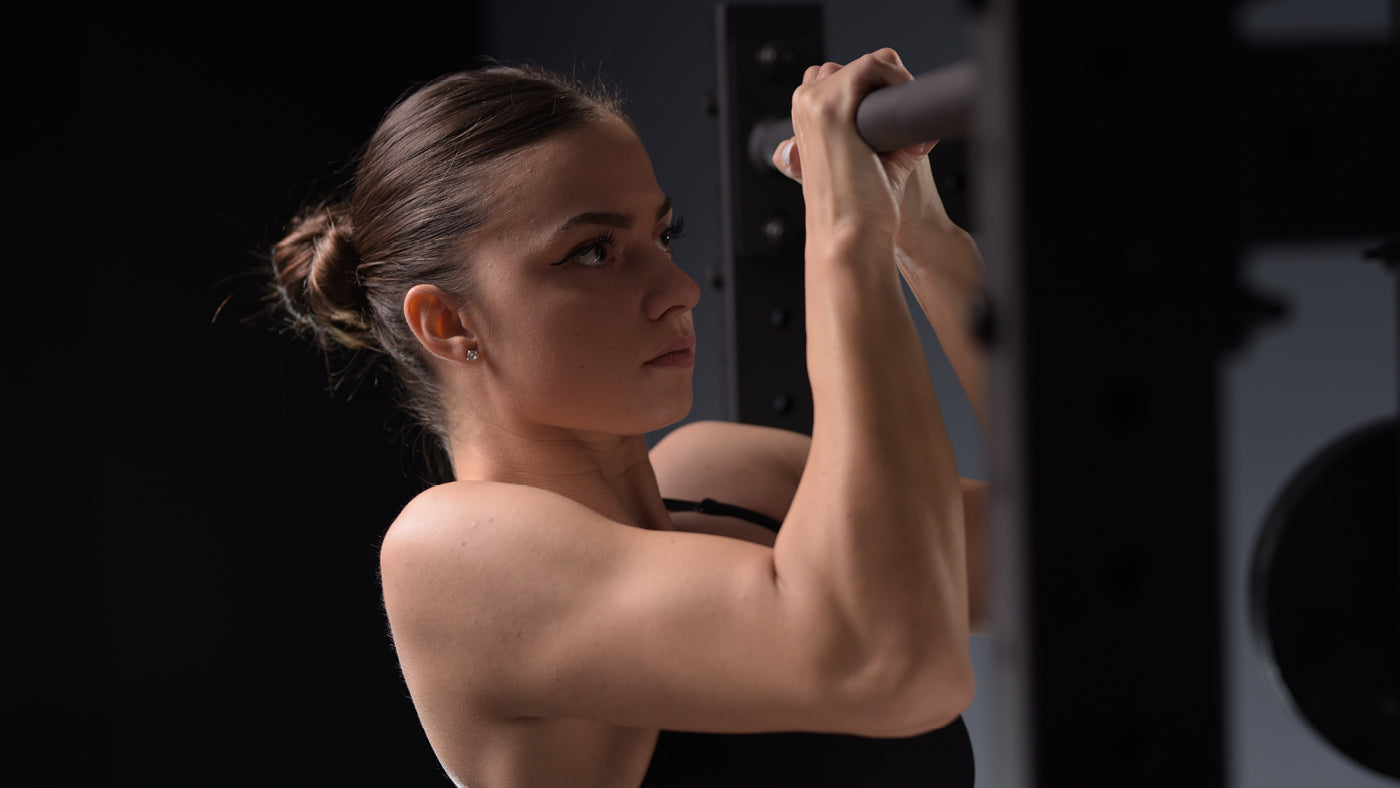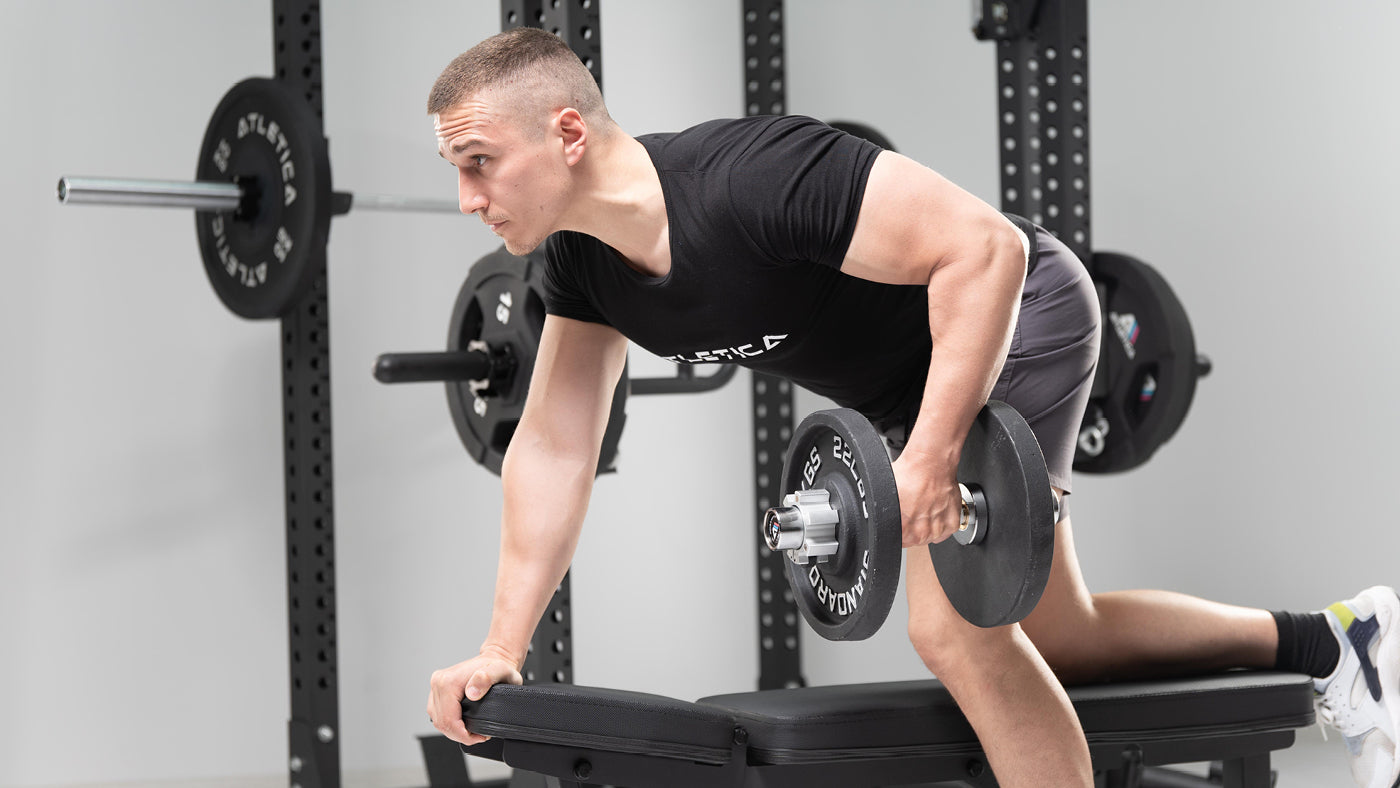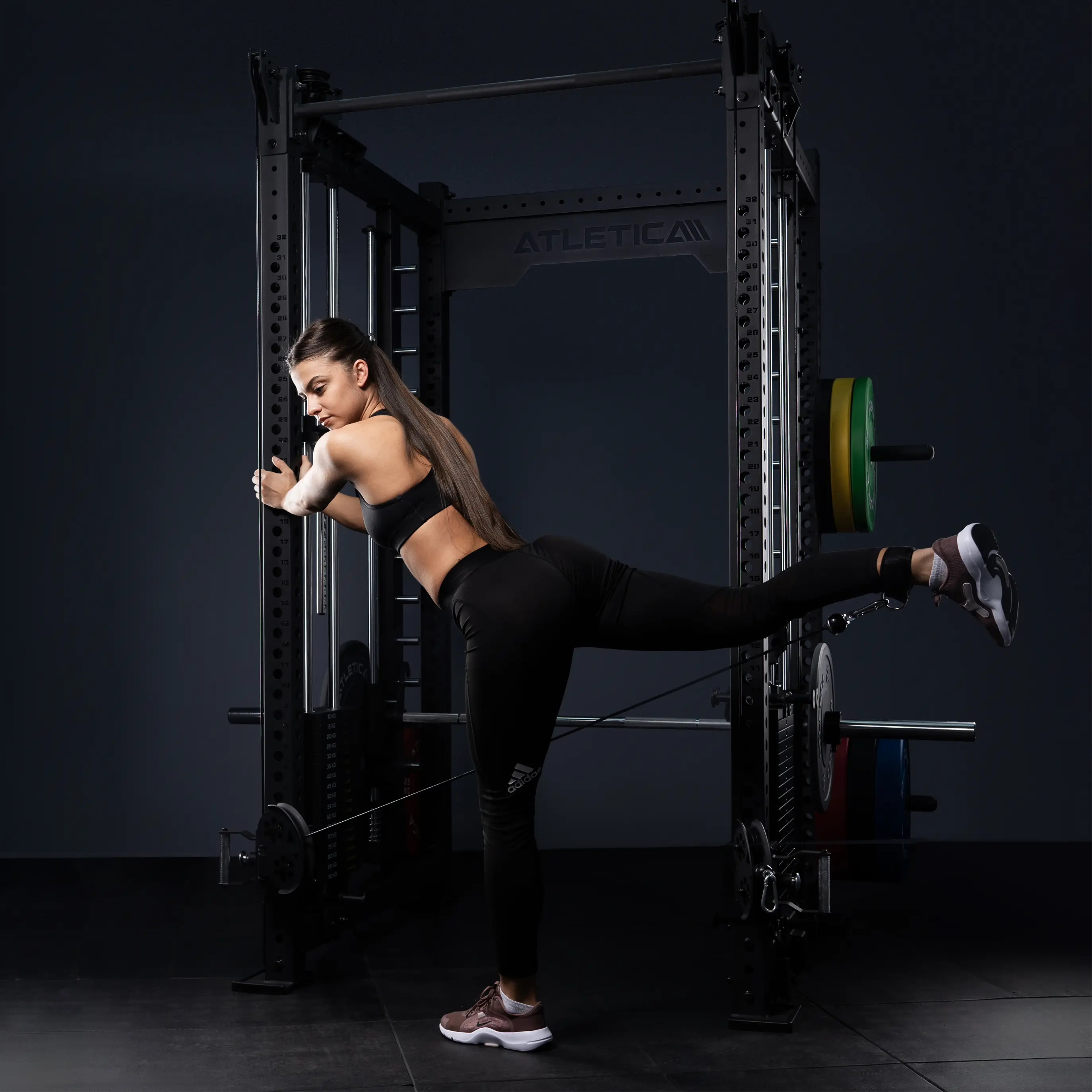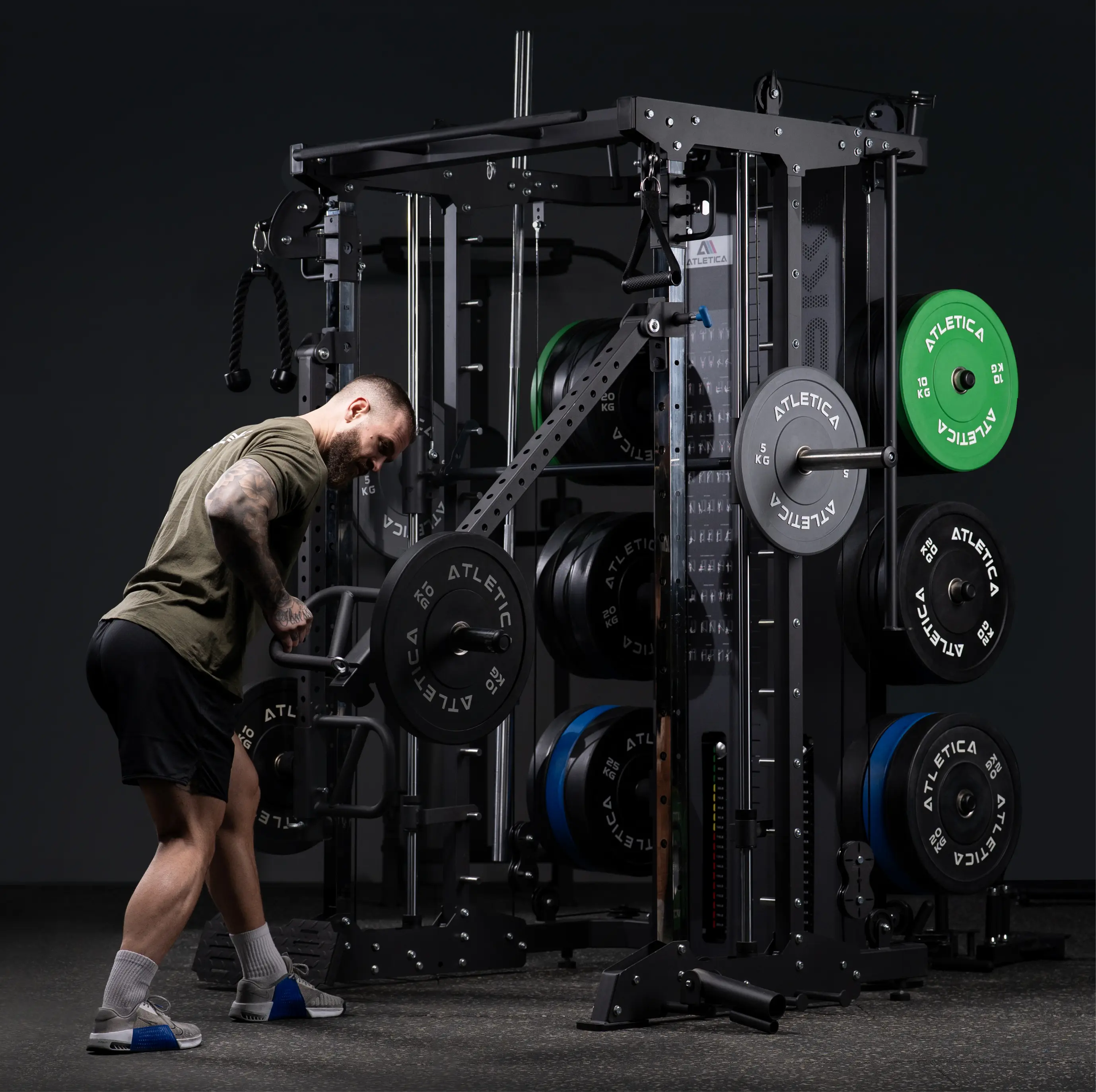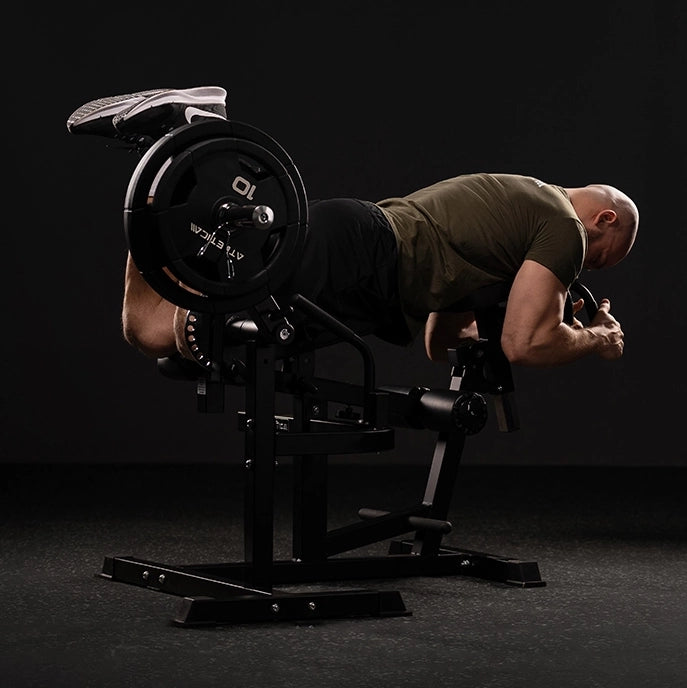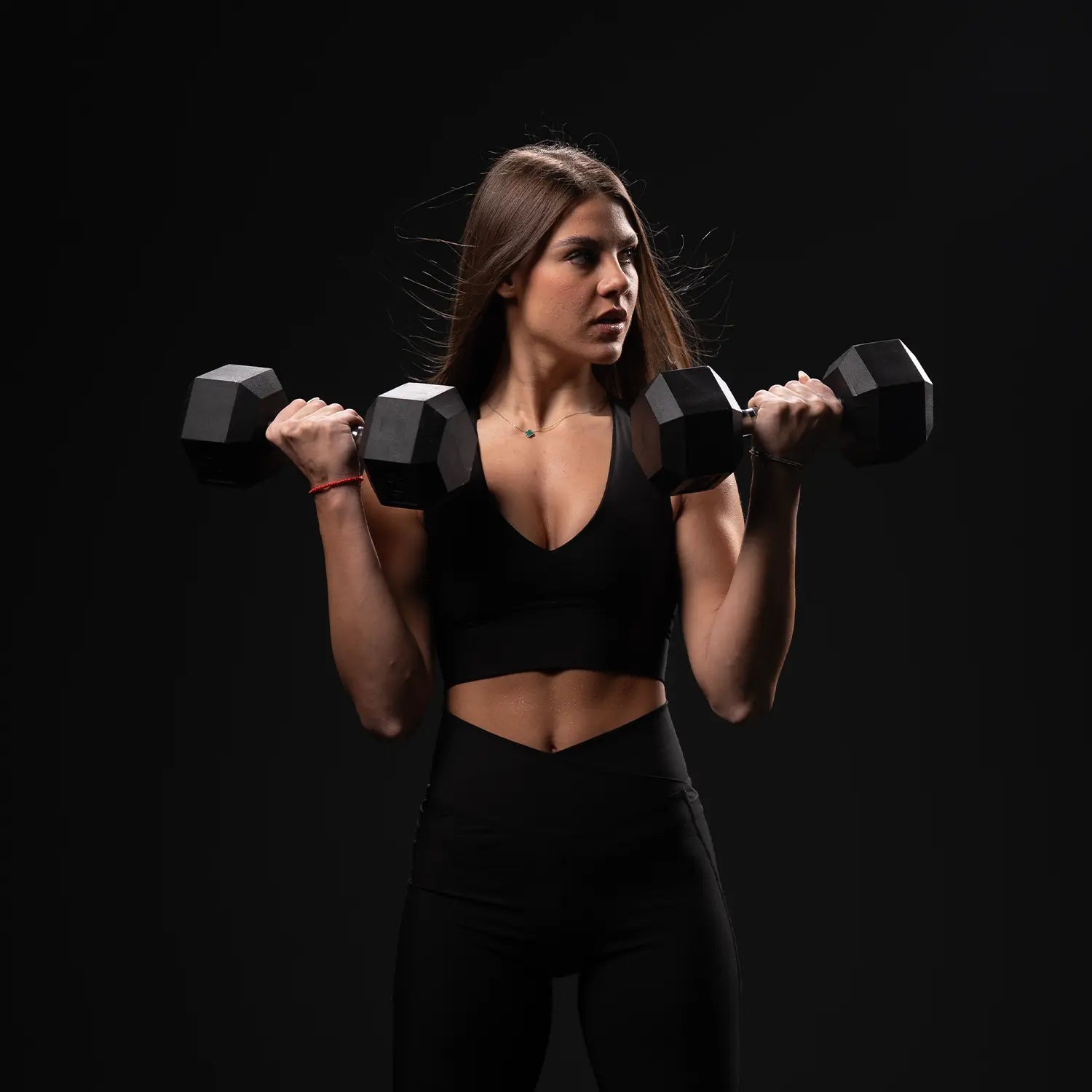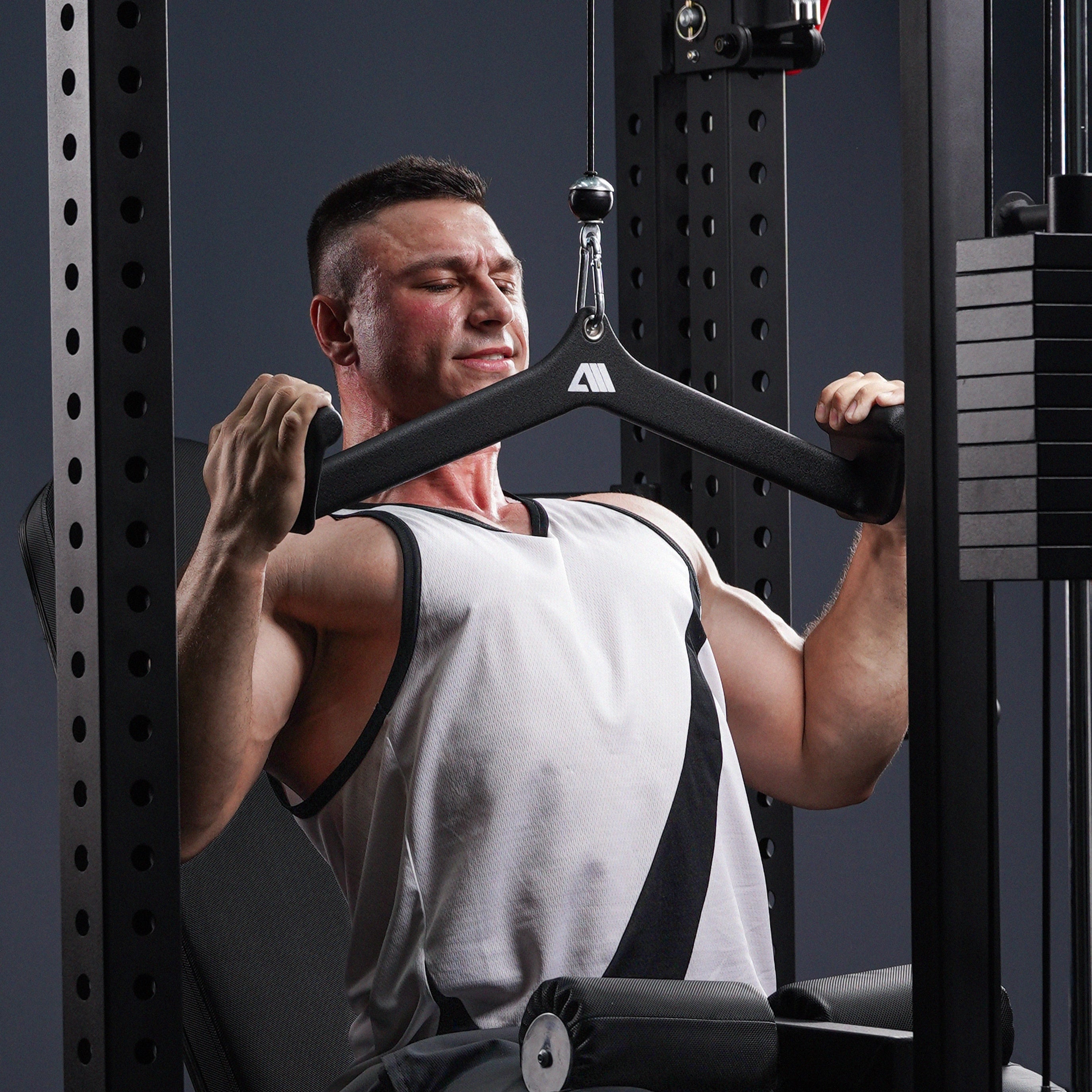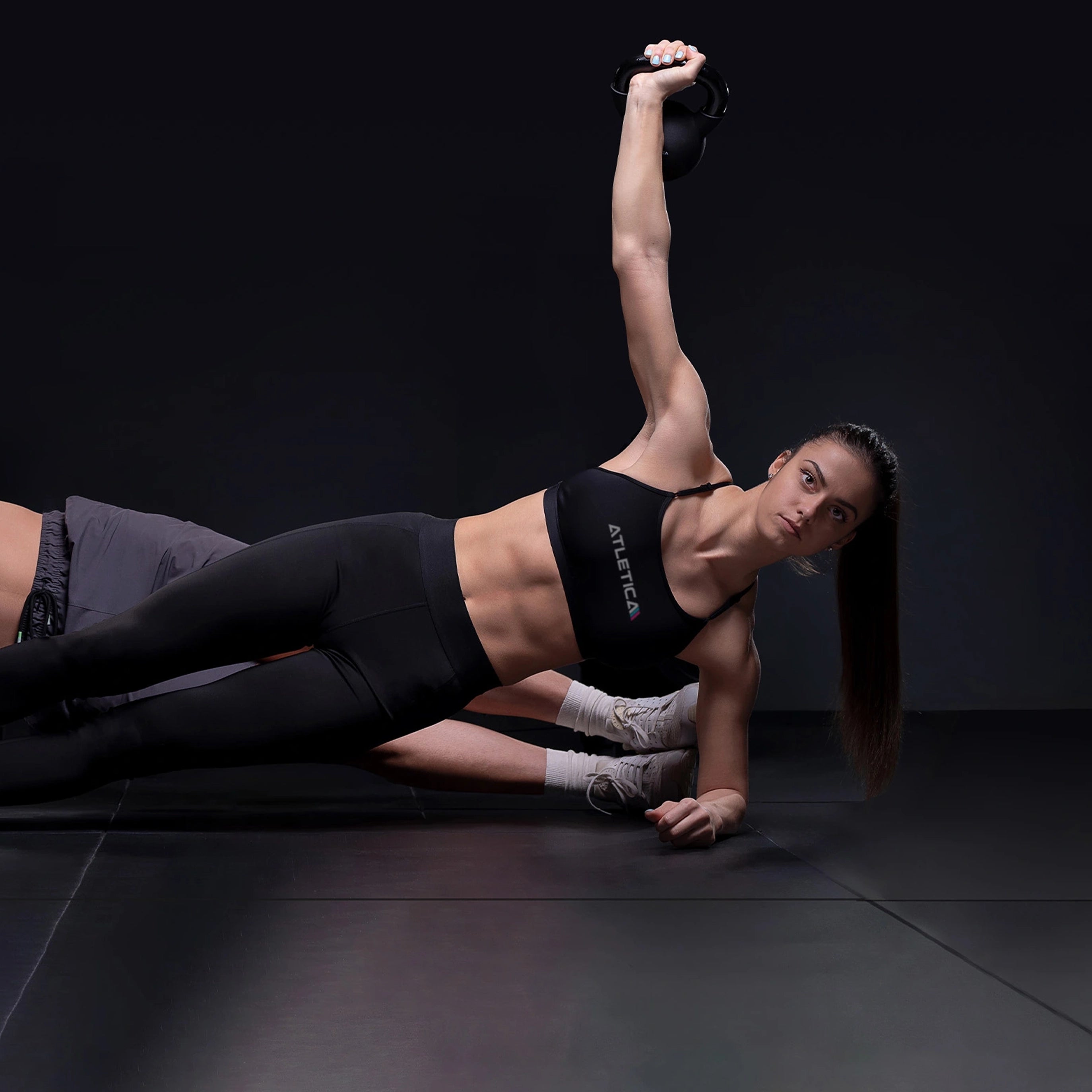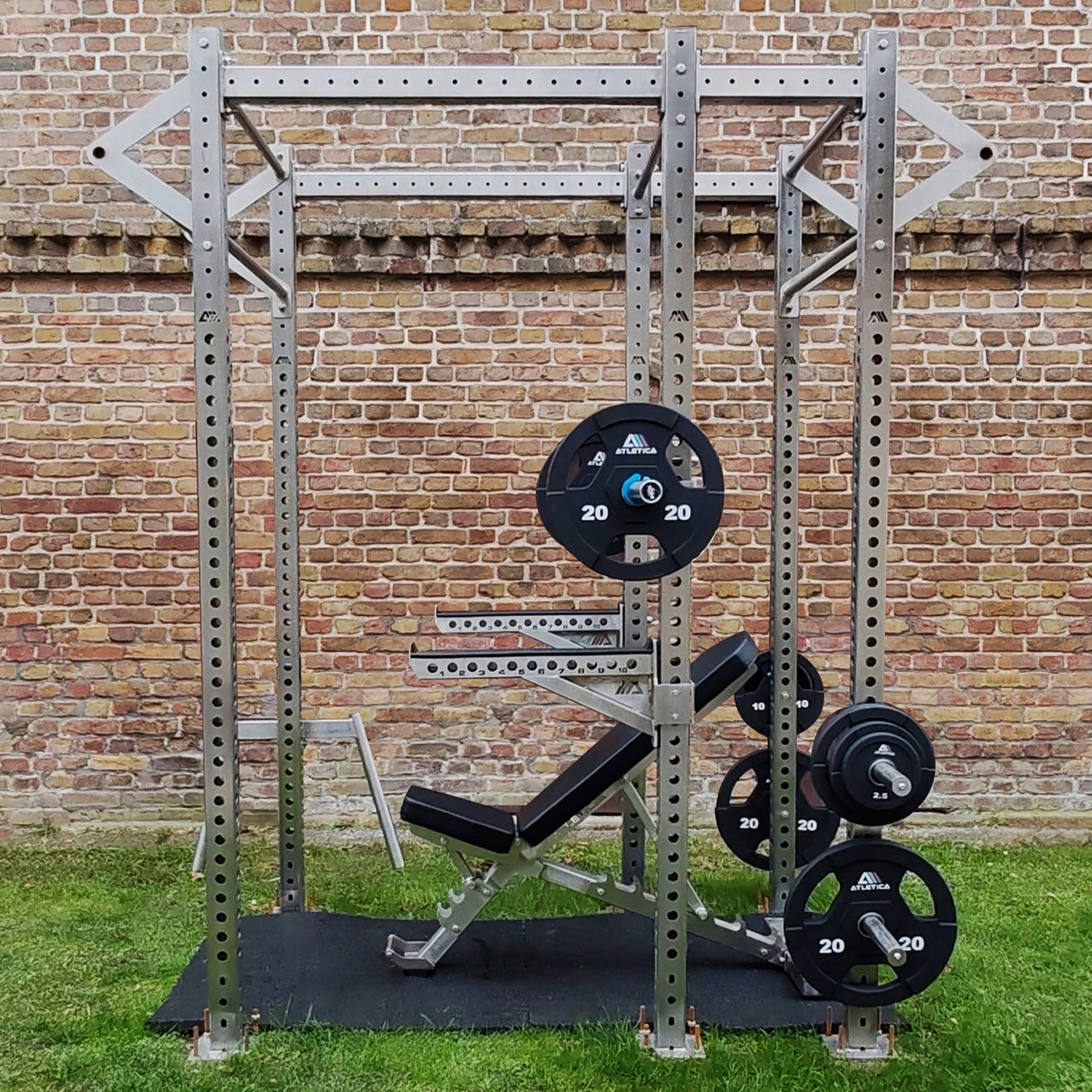The hip thrust is one of the most effective exercises for building and strengthening the gluteal muscles ( gluteus maximus ). This exercise has gained increasing popularity in recent years and is now an integral part of many training programs – especially in the areas of strength training and gluteal muscle training. In this article, you'll learn everything you need to know about the hip thrust : from proper execution and benefits to tips and tricks for incorporating the exercise into your workout.

1. What is the hip thrust?
The hip thrust is an isolated exercise specifically designed to activate and strengthen the glutes. Unlike many other exercises where the glutes act as a secondary muscle, the hip thrust is the primary exercise for toning and strengthening the glutes. It involves lifting the pelvis in a hip flexion, which activates the glutes in the best possible way.
2. The correct execution of the hip thrust
To perform it correctly and get the most out of this exercise, it's crucial to master the correct technique. Here's a step-by-step guide:
- Starting position : Sit with your back against a stable bench or raised platform. Your feet are flat on the floor, about shoulder-width apart, and your knees are bent at a 90-degree angle. Your torso remains upright and your shoulder blades rest on the bench.
- Dumbbell position : Place a barbell or other weight on your hips. If you want additional resistance, you can also use a weight plate. Make sure the weight is evenly distributed across your hips and doesn't press uncomfortably.
- The movement: Now push your hips up by tightening your glutes and raising your pelvis. Your torso should be in a straight line with your thighs. Make sure you lift your hips fully and squeeze your glutes as much as possible.
- Final position : Hold the top position for a moment to feel the tension in your glutes. Then slowly and with control, lower your pelvis until your hips almost touch the floor.
- Repetition : Repeat the movement for 12 to 15 repetitions in 3 to 4 sets.

3. Benefits of the hip thrust
The hip thrust is an outstanding exercise for several reasons, especially invaluable for athletes, fitness enthusiasts, and people looking to target their glutes. Here are the key benefits:
a. Targeted gluteal muscle training
The gluteal muscles are only secondarily active in many other exercises. The hip thrust, on the other hand, is specifically targeted at these muscles. Anyone who wants a firm, strong buttock can't ignore this exercise. The hip thrust targets all parts of the buttocks, leading to harmonious development.
b. Improved hip extension and hip stability
One of the most important functions of the glutes is hip extension, a movement often required in sports such as running, jumping, and lifting. This exercise improves this movement and strengthens the hip muscles, which can lead to improved performance in many sports.
c. Less strain on the lower back muscles
Compared to other gluteal exercises, such as squats or deadlifts, the hip thrust places less strain on the lower back. This reduces the risk of back pain or injury, making it an ideal exercise for people with sensitive backs.
d. Increased pelvic mobility and stability
Performing the hip thrust not only strengthens the glutes but also promotes pelvic mobility and stability. This improvement in pelvic mobility is especially important for people who work a lot in a sedentary position, as the hip flexors often shorten and the glutes become less active.
e. Promoting better posture
A strong buttock helps keep the pelvis in optimal position, which in turn improves posture. Strong gluteal muscles help correct the pelvis from a hollow back position and provide better support for the spine.
4. Hip thrust variations for advanced trainees
Once you've integrated the hip thrust into your workout routine and are ready to take on a new challenge, you can try different variations to increase the intensity:
a. One-legged hip thrusting
With the single-leg hip thrust, you perform the exercise with only one leg. This variation intensifies the exercise because it requires more stability and control. It helps to train the glutes and core stability even more specifically.
b. Hip Thrust with resistance bands
You can wrap resistance bands around your thighs to add extra resistance and maintain tension throughout the movement. This provides an increased training stimulus and promotes muscle hypertrophy.
c. Hip thrust on an unstable surface
Another approach is to place your feet on an unstable surface, such as a BOSU ball or kettlebell. This increases the difficulty and promotes stability muscles.

5. Tips and common mistakes when doing hip thrusts
To get the most out of your workout, it's important to avoid some common mistakes:
- Tilt your chin down: Keep your head in a neutral position. Lowering your chin too far can strain your neck.
- Incorrect foot position: Make sure your feet are shoulder-width apart and your knees do not tilt inward during the exercise.
- Hyperextension of the hips: Avoid hyperextending your hips. Your hips should only rise to a straight line with your torso—overextending can strain your lower back.
6. Conclusion: The hip thrust as an indispensable exercise
This workout is an excellent exercise for strengthening your glutes, stretching your hip flexors, and improving overall posture. Whether you're a beginner or advanced, the hip thrust should be a staple in your workout routine if you want to specifically build your glutes.
With proper execution and the variations mentioned above, you can effectively integrate the exercise into your workout and increase not only your buttocks but also your overall strength and stability.
Which fitness equipment is best suited for this?
There are various fitness equipment options available for hip thrusts that support the exercise and help maximize the training effect. Here are the best fitness equipment you can use for effective hip thrusts:
1. Barbell
The barbell is the most common and effective piece of equipment for adding resistance to this workout. With a barbell, you can adjust the weight and increase the resistance to target your glutes more intensely.
Advantages:
- Allows precise weight adjustment.
- Allows training with high resistance.
- Promotes targeted muscle growth and strength development.
Tip : Use weight plates with different weights to vary your training depending on your performance level and goal.
2. Kettlebells
Kettlebells can also be used for the hip thrust, especially if you're looking for a lower impact or more functional training variation. You can rest a kettlebell on your hips and perform the thrust to add extra weight.
Advantages:
- Ideal for functional training and improved movement coordination.
- More compact and easier to handle than a barbell.
- Particularly suitable for beginners or advanced users who want to improve their technique.
3. Resistance bands
Resistance bands are a great option for adding extra resistance to hip thrusts. The bands can be placed around the thighs or hips to create consistent tension throughout the entire movement.
Advantages:
- Flexible and space-saving.
- Increase resistance without additional weights.
- Very suitable for at home or for training on the go.
Tip : Resistance bands are ideal for beginners who don't want to train with heavy weights yet, or for advanced users who want additional muscle stimulation.
4. Hip Thrust Machine
For advanced athletes or gyms, a hip thrust machine is a good option. These machines are specifically designed to isolate the hips and maximally activate the glutes. They offer a safe, stable frame and allow for high-resistance training.
Advantages :
- Very comfortable and stable.
- Specially developed for hip thrusts.
- Allows higher resistances with less risk of technical errors.
5. Floor mats
Although floor mats aren't strictly fitness equipment in the traditional sense, they are very important for performing exercises safely and comfortably. The mats provide a soft, non-slip surface and protect the back and buttocks from weight-related injuries.
Advantages:
- Protect against pressure sores and injuries.
- Ensure a stable and safe position during training.
- Prevent slipping during hip thrusts.
Tip : Choose a thick, non-slip mat to perform the exercise safely and comfortably.
6. Boxes or benches
For hip thrusts, you'll need a stable bench or box to support your upper body and raise your pelvis. The bench should be stable and at a height that allows you to move your hips at an optimal angle while performing the exercise.
Advantages:
- Provides the correct height for full hip flexion.
- Supports your upper body during movement.
- Ideal for different variations of the hip thrust (e.g. one-legged).
Tip : An adjustable bench is an excellent choice as it allows you to adjust the height according to your needs.

Conclusion on the hip thrust
This workout is an excellent exercise for strengthening the glutes, and to get the most out of this exercise, choosing the right equipment is crucial. From barbells to kettlebells to hip thrust machines, there are many machines available that can increase resistance and help you achieve your goals.
Additionally, you should make sure you use resistance bands and floor mats to perform the exercise safely and effectively. Whether you're training at the gym or at home, the right equipment will allow you to perform the hip thrust efficiently and with maximum effectiveness. And, of course, you can find everything you need at Atletica !





